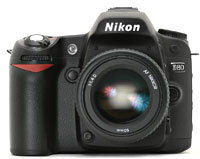 Nikon has announced their new ten megapixel D80 digital SLR, the company’s successor to the trailblazing D70/D70s cameras.
Nikon has announced their new ten megapixel D80 digital SLR, the company’s successor to the trailblazing D70/D70s cameras.
Along with the beefed up megapixel count, the D80 sports an updated body design with some softening of lines and a slight slimming down of the overall size.
There’s also a new image processing engine, improved menu interface, 3D Colour Matrix Metering II, 11-area AF system and configurable Auto ISO (selectable maximum ISO, minimum shutter speed) and configurable high ISO and long exposure noise reduction.
On the back of the camera, there’s a larger and brighter viewfinder and the welcome addition of a bigger 2.5″ LCD TFT LCD screen offering improved resolution (230k) and a 170 degree viewing angle.
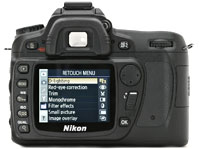 The D80 also offers a suite of in-camera retouching tools including shadow / highlight enhancement, red-eye reduction, trimming and monochrome and filter effects.
The D80 also offers a suite of in-camera retouching tools including shadow / highlight enhancement, red-eye reduction, trimming and monochrome and filter effects.
Upgraders may not be so chuffed with Nikon’s decision to switch from the chunky Compact Flash format to SD cards, but new users will appreciate the adoption of the far more popular storage medium.
Sitting between the entry-level Nikon D50 and the semi-professional / professional D200, the D80 looks a wallet tempting proposition, and should provide fierce competition for Sony’s Alpha 100 SLR.
The D80 will be hitting the shelves in September with a keen body-only price of in £699 ($999), or £949 ($1299) for the kit including the 18-135 mm DX lens.
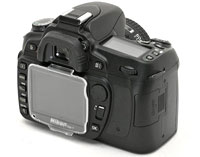 Nikon D80 specs Sensor 10.2 million effective pixels
Nikon D80 specs Sensor 10.2 million effective pixels
Image sizes 3872 x 2592 (10.0 MP), 2896 x 1944, 1936 x 1296, 2240 x 1488, 1504 x 1000
Autofocus 11 area TTL, Nikon Multi-CAM1000
Lens servo Single-servo AF (AF-S), Continuous-servo AF (AF-C), Automatic AF-S/AF-C (AF-A), Manual focus (M)
Metering 420 pixel RGB sensor, 3D color matrix metering II
Metering range EV 0 to 20 (3D color matrix / CW), EV 2 to 20 (Spot)
Meter coupling CPU and AI CPU
Sensitivity ISO 100 – 1600, Up to ISO 3200 with boost
Auto ISO Selectable maximum ISO, Selectable minimum shutter speed
Shutter Electronically controlled vertical-travel focal plane shutter Shutter speed 30 to 1/4000 sec, Bulb
Flash sync 1/200 sec
Built-in flash Guide number 13 (ISO 100)
Wireless flash Nikon i-TTL, can act as commander
Continuous 3 fps, 23 / 6 frames (JPEG / RAW)
White balance Auto, 6 presets, Kelvin colour temperature, Manual preset (
Image presets Normal, Softer, Vivid, More Vivid, Portrait, B&W
High ISO NR Normal, Low, High, Off
Multiple exposures Yes
Viewfinder Eyepoint: 19.5 mm (at -1.0 m-1), Frame coverage 95% (approx.), Magnification approx. 0.94x, B-type Bright View Clear Matte II
LCD monitor 2.5″ TFT LCD, 230,000 pixel TFT, 170 degree viewing angle
Histogram Luminance & RGB histogram
USB USB 2.0 Hi-Speed (480 Mbps max.)
Storage SD / SD-HC card
Battery Lithium-Ion EN-EL3e (7.4 V, 1500 mAh)
Battery status Remaining charge (%), No. of shots taken since last charge, Battery life (5 stage) 3
Dimensions 132 x 103 x 77 mm (5.2 x 4.1 x 3.0 in)
Weight No battery: 585 g (1.3 lb)
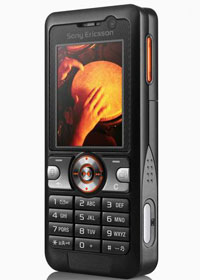 Sony Ericsson has announced the latest addition to its popular ‘K’ series, with the ‘candybar’ shaped Sony K618 promising super fast video, music streaming and Web browsing.
Sony Ericsson has announced the latest addition to its popular ‘K’ series, with the ‘candybar’ shaped Sony K618 promising super fast video, music streaming and Web browsing.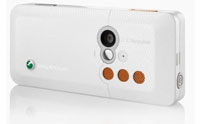 The memory card can be upgraded up to a maximum of 1GB of storage.
The memory card can be upgraded up to a maximum of 1GB of storage.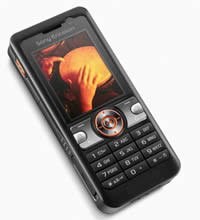 For keen bloggers who like to update their personal diaries when you’re on the move, the K618 can send images direct to their own blog via Mobile Blogger.
For keen bloggers who like to update their personal diaries when you’re on the move, the K618 can send images direct to their own blog via Mobile Blogger.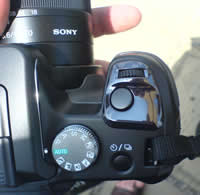 We had our hands on the Sony Alpha A100 last week, Sony’s first step into the Digital SLR (dSLR) market.
We had our hands on the Sony Alpha A100 last week, Sony’s first step into the Digital SLR (dSLR) market.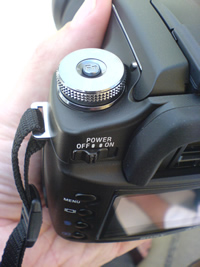 What’s Hot
What’s Hot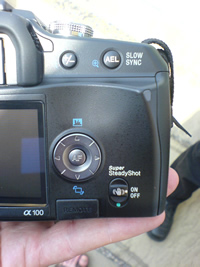 First impressions
First impressions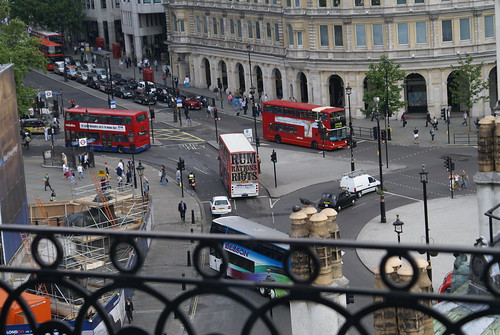
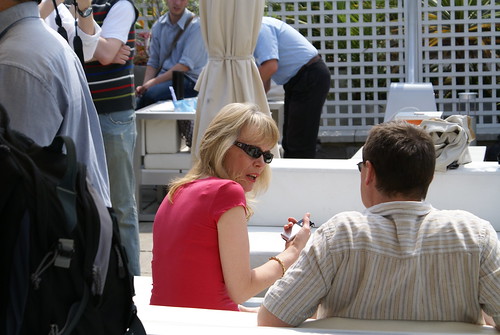
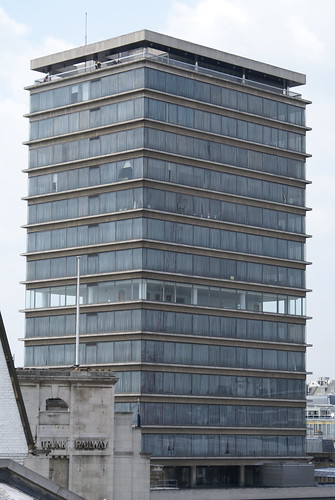
 Some details of Sony’s eagerly-awaited debut into the dSLR market have begun to emerge online.
Some details of Sony’s eagerly-awaited debut into the dSLR market have begun to emerge online.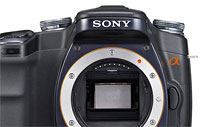 This feature – inherited from Minolta -begins autofocus and auto-exposure as soon as it detects your peeper gazing through the viewfinder. Neat
This feature – inherited from Minolta -begins autofocus and auto-exposure as soon as it detects your peeper gazing through the viewfinder. Neat The onboard high-speed autofocus is said to sport 4 focus modes – Single-shot AF; Direct Manual Focus; AF Automatic; AF Continuous – with centre-weighted, spot and 40-segment honeycomb pattern metering modes.
The onboard high-speed autofocus is said to sport 4 focus modes – Single-shot AF; Direct Manual Focus; AF Automatic; AF Continuous – with centre-weighted, spot and 40-segment honeycomb pattern metering modes.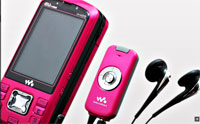 Sony Ericsson has announced its first Walkman phone for Japan today and it looks like a beaut.
Sony Ericsson has announced its first Walkman phone for Japan today and it looks like a beaut.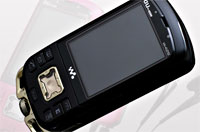 True to its Walkman heritage, the slide-out phone has a smorgasbord of built-in dedicated music controls, including a natty new mechanical navigation wotsit bolted on to the bottom of the phone.
True to its Walkman heritage, the slide-out phone has a smorgasbord of built-in dedicated music controls, including a natty new mechanical navigation wotsit bolted on to the bottom of the phone.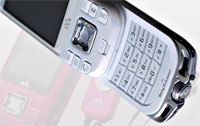 There’s been no firm announcement of the retail price yet, although it’s hotly rumoured to be around the $180 mark, and no announcement of a UK release yet, natch.
There’s been no firm announcement of the retail price yet, although it’s hotly rumoured to be around the $180 mark, and no announcement of a UK release yet, natch.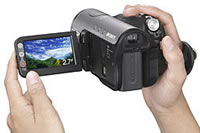 The HC3 has a tough act to follow – its own big brother, the HC1. Last year’s HC1 brought High Definition recording within the budget of almost any home movie-maker for the first time, and did it with assurance and style. Luckily, Sony hasn’t rested on its laurels, and the HC3 feels very much like a replacement for the HC1 rather than a mere upgrade.
The HC3 has a tough act to follow – its own big brother, the HC1. Last year’s HC1 brought High Definition recording within the budget of almost any home movie-maker for the first time, and did it with assurance and style. Luckily, Sony hasn’t rested on its laurels, and the HC3 feels very much like a replacement for the HC1 rather than a mere upgrade. Changes to the imaging pipeline have enabled Sony to offer a couple of new features in the HC3. The first is the ability to capture up to three 2MP still photos while filming (the images buffer until you stop recording). The second is Smooth Slow capture, where the capture rate increases from 50 to 200 fields per second for three seconds. Audio recording and the Super SteadyShot audio are disabled while you shoot. You can then play back this footage at a normal frame rate, giving 12 seconds of smooth slow motion footage.
Changes to the imaging pipeline have enabled Sony to offer a couple of new features in the HC3. The first is the ability to capture up to three 2MP still photos while filming (the images buffer until you stop recording). The second is Smooth Slow capture, where the capture rate increases from 50 to 200 fields per second for three seconds. Audio recording and the Super SteadyShot audio are disabled while you shoot. You can then play back this footage at a normal frame rate, giving 12 seconds of smooth slow motion footage.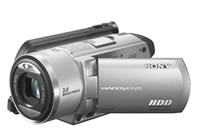 Just when you thought Sony couldn’t add any more formats to its camcorder range (the electronics giant already carries MiniDV, MicroMV, Hi8, Digital 8 and DVD models), along comes a new hard disc camcorder (the DCR-SR90) and a re-vamped Hi Def pro-sumer shooter (HDR-HC3). We caught up with both at an exclusive hands- on presentation in London. Details of the Sony HDR-HC3 will follow tomorrow.
Just when you thought Sony couldn’t add any more formats to its camcorder range (the electronics giant already carries MiniDV, MicroMV, Hi8, Digital 8 and DVD models), along comes a new hard disc camcorder (the DCR-SR90) and a re-vamped Hi Def pro-sumer shooter (HDR-HC3). We caught up with both at an exclusive hands- on presentation in London. Details of the Sony HDR-HC3 will follow tomorrow. The interface is generally very good, with a 2.7-inch folding touchscreen ported straight from Sony’s MiniDV range, giving access to a good range of creative features, including true 16:9 recording.
The interface is generally very good, with a 2.7-inch folding touchscreen ported straight from Sony’s MiniDV range, giving access to a good range of creative features, including true 16:9 recording.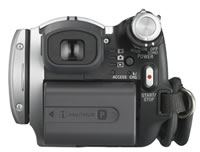 Playback features include basic editing tools that let you move scenes around but not cut or join them. Ease of use is emphasized with a One Touch DVD burn button for Windows computers with a DVD writer – just plug in via USB, slip in a disc and away you go.
Playback features include basic editing tools that let you move scenes around but not cut or join them. Ease of use is emphasized with a One Touch DVD burn button for Windows computers with a DVD writer – just plug in via USB, slip in a disc and away you go. Video game kings Nintendo have opened hostilities with arch-rivals Microsoft and Sony with the unveiling of its new “Wii” console.
Video game kings Nintendo have opened hostilities with arch-rivals Microsoft and Sony with the unveiling of its new “Wii” console.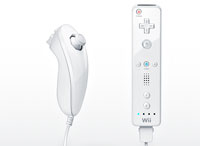 The Wii will certainly be considerably cheaper that its rivals when it goes on sale later this year, with pundits predicting a price around the $250 mark – cheaper than the Xbox 360 and around half the price of the top-of-the-range PS3.
The Wii will certainly be considerably cheaper that its rivals when it goes on sale later this year, with pundits predicting a price around the $250 mark – cheaper than the Xbox 360 and around half the price of the top-of-the-range PS3.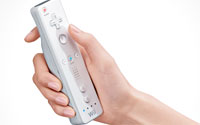 Sporting an unusual, one-handed wireless controller, the remote control-shaped Wii handset comes with motion sensors and speakers, letting users interact with games by waving their arms about and looking like a bit of a nutter.
Sporting an unusual, one-handed wireless controller, the remote control-shaped Wii handset comes with motion sensors and speakers, letting users interact with games by waving their arms about and looking like a bit of a nutter. Nintendo reckon that users will find their one-hand, noise-making controller more fun and intuitive: “Our goal is to expand the total number of people playing games,” said Nintendo president Satoru Iwata
Nintendo reckon that users will find their one-hand, noise-making controller more fun and intuitive: “Our goal is to expand the total number of people playing games,” said Nintendo president Satoru Iwata Reggie Fils-Aime, chief marketing officer at Nintendo, was even more enthusiastic, insisting that the Wii was designed so “even your mother could use it.”
Reggie Fils-Aime, chief marketing officer at Nintendo, was even more enthusiastic, insisting that the Wii was designed so “even your mother could use it.” Sony has announced the pricing for its eagerly anticipated next generation PS3 console at a pre-E3 conference in Los Angeles.
Sony has announced the pricing for its eagerly anticipated next generation PS3 console at a pre-E3 conference in Los Angeles. There’s certainly a lot at stake for Sony, with the company expected to lose several hundred dollars per unit – while hoping to rake in fat profits from software sales over the life of the console.
There’s certainly a lot at stake for Sony, with the company expected to lose several hundred dollars per unit – while hoping to rake in fat profits from software sales over the life of the console. The company expects two million of the puppies to have shunted off their production line and into the shops during the ‘launch window,’ four million by the end of the year and six million worldwide by March 31, 2007.
The company expects two million of the puppies to have shunted off their production line and into the shops during the ‘launch window,’ four million by the end of the year and six million worldwide by March 31, 2007.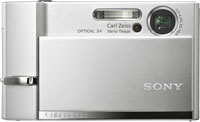 Sony America has launched a new digital camera today for the trendy party crowd, the 7.2-megapixel Cyber-shot DSC-T30.
Sony America has launched a new digital camera today for the trendy party crowd, the 7.2-megapixel Cyber-shot DSC-T30. Introduced to the T-Series is a set of selectable colour modes allowing users to choose ‘natural mode’ for subtle colour variations or ‘vivid mode’ for more intense colours – great for reproducing the full range of hues of the pavement pizza at the end of the night.
Introduced to the T-Series is a set of selectable colour modes allowing users to choose ‘natural mode’ for subtle colour variations or ‘vivid mode’ for more intense colours – great for reproducing the full range of hues of the pavement pizza at the end of the night.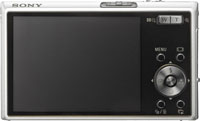 Other features include a Carl Zeiss Vario-Tessar 3x optical zoom (f3.5-4.5), a hefty 3 inch “Clear Photo LCD Plus screen” and 58MB of internal memory.
Other features include a Carl Zeiss Vario-Tessar 3x optical zoom (f3.5-4.5), a hefty 3 inch “Clear Photo LCD Plus screen” and 58MB of internal memory.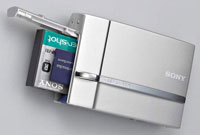 Specifications
Specifications